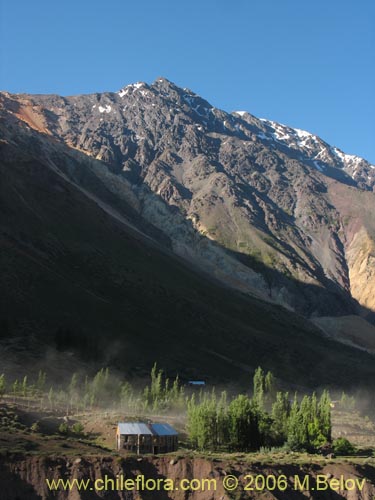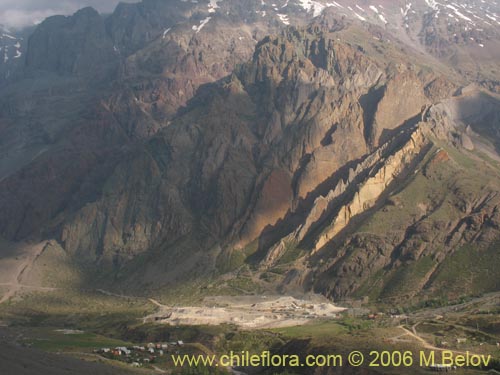than any other country in the world*
Stop ISRAELI WAR CRIMES and GENOCIDE

|
ISRAEL MURDERED MORE CHILDREN
than any other country in the world* Stop ISRAELI WAR CRIMES and GENOCIDE Your Seeds Source...
| ||
| ||
The El Morado Natural Monument is located about 80 km from Santiago, accessible by a good paved road up to San Gabriel and then by a dirt-track road (last 18 km.) to Baños Morales. It is a narrow glacier valley which stretches for about 8 km and is 1 km wide. The main hiking trail leaves the entrance at 1800 m and climbs steadily for about 2.5 km to 2170 m where there is an interesting swampy area, Aguas de Panimávida. From there on the trail is relatively flat for another 3 km, where it reaches a small lake. Slightly further on (1.5 km and some vertical gain) one comes to the glacier.

Best season to observe the flora: due to the different altitudes in the area, one can visit this place during several months starting from October and ending in March; the lower reaches close to the entrance are in bloom up to mid December, then it is the turn of the part leading to the El Morado Lake. From February on only high-altitude areas ( 2700 - 4000 m) may be of interest, and they are rather difficult to access (involves a lot of climbing on steep slopes), so it is not very recommendable (it may be better to opt for other areas where the vehicle can reduce the climbing, like Baños Colina, Embalse de Yeso or La Parva).

The flora of the area is extremely varied, rich, and has many interesting species. Probably the most intriguing one is the Austrocactus spiniflorus, one of the few Chilean cactaceae species able to thrive in areas with snow cover. If you find it, you will immediately recognize it - it is a small (5 - 10 cm) reddish plant with short thin needles. Although quite rare, several populations can easily be found in the area at an altitude of 1850 - 1950 m. (Instead of following the main trail which, after leaving the entrance and making a short zig-zag climb, turns north into the valley, head west for about 700 m. You will find the cacti on an almost flat part.
Calceolaria corymbosa ssp. mimuloides
If you do not want to do a lot of walking or have already visited El Morado, your best bet would be to continue towards Banos La Colina. Instead of turning left to Banos Morales, you drive straight ahead